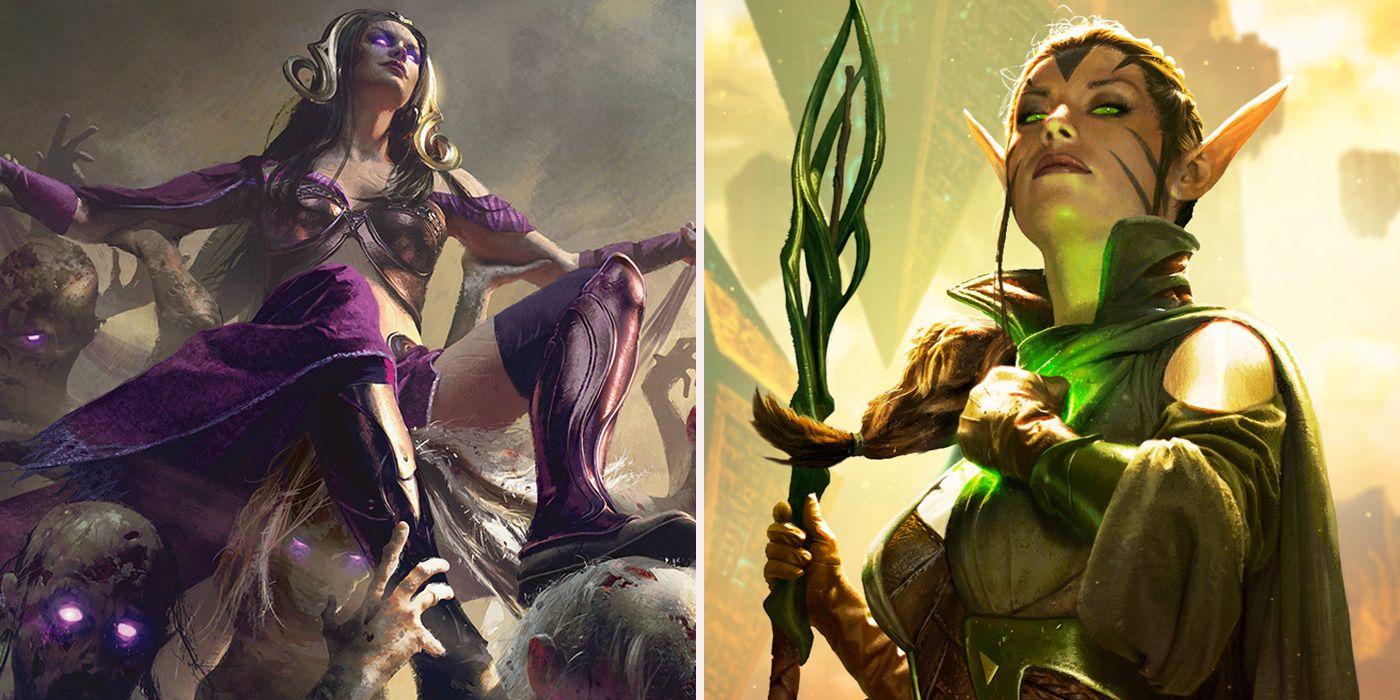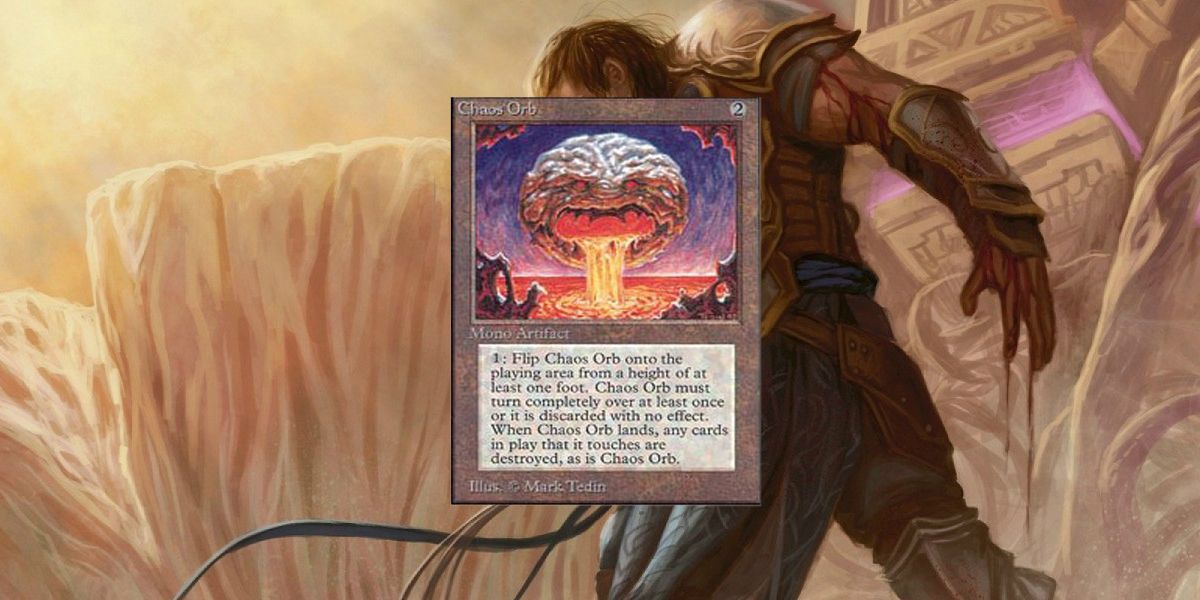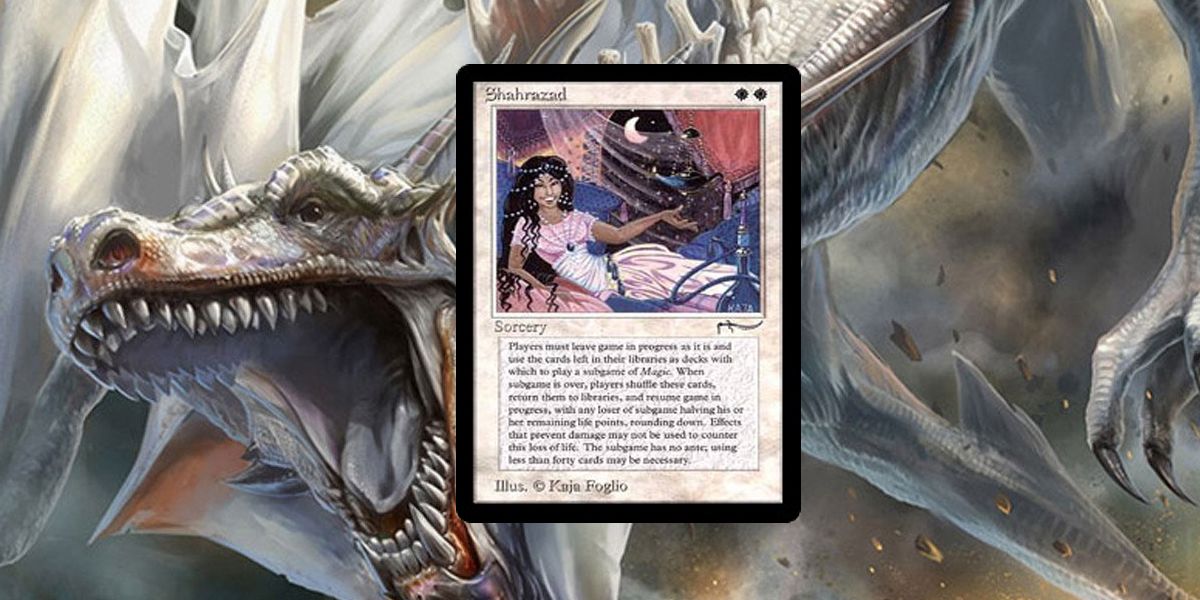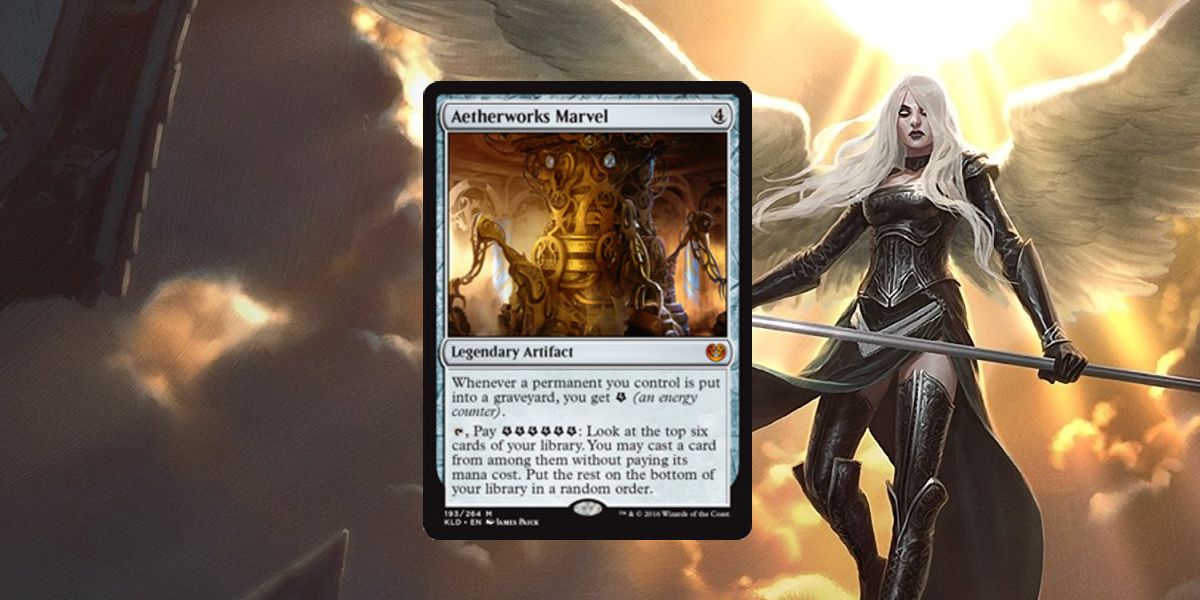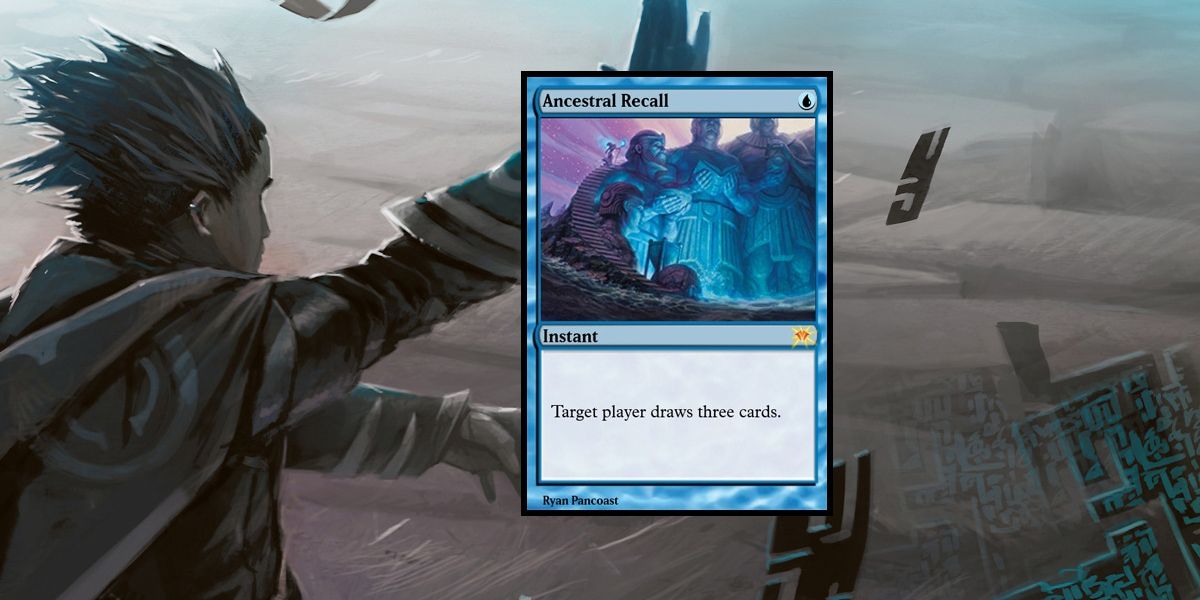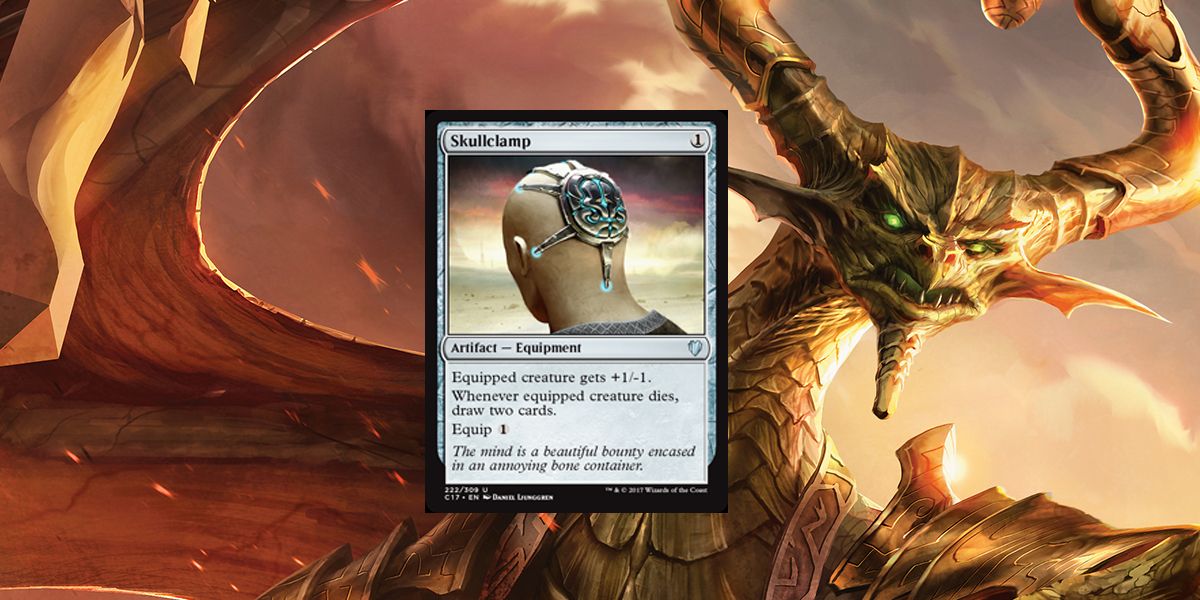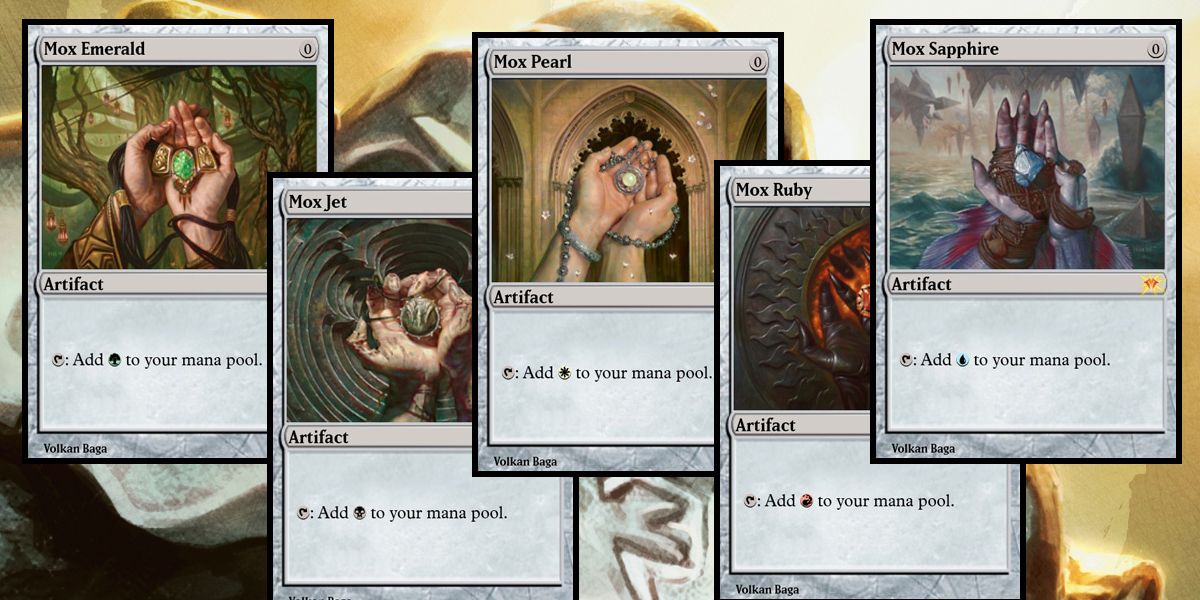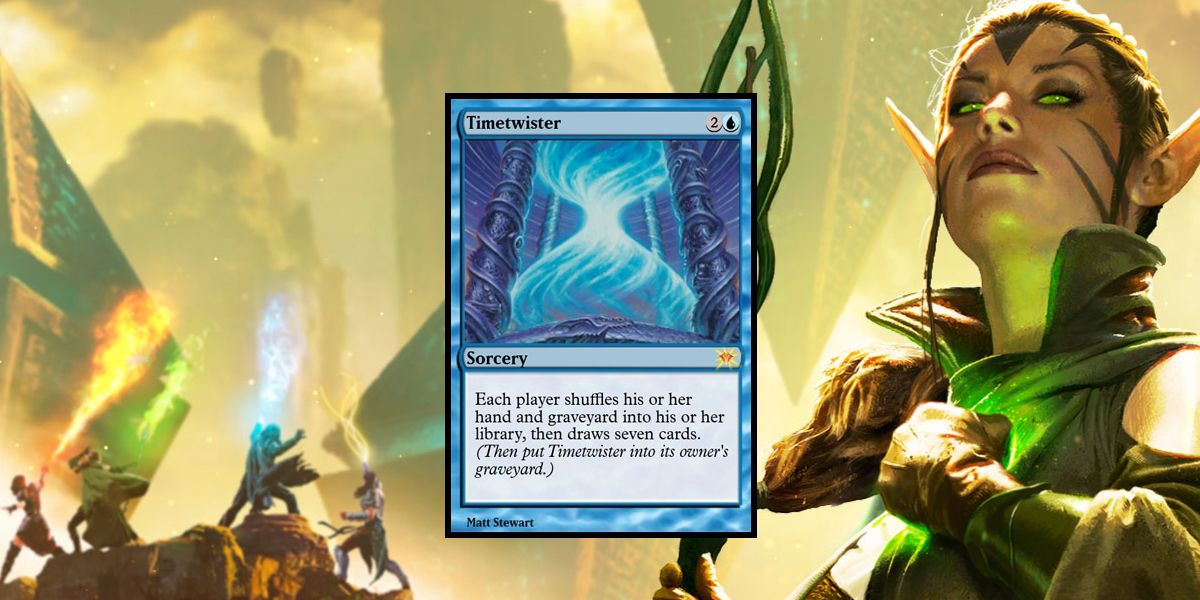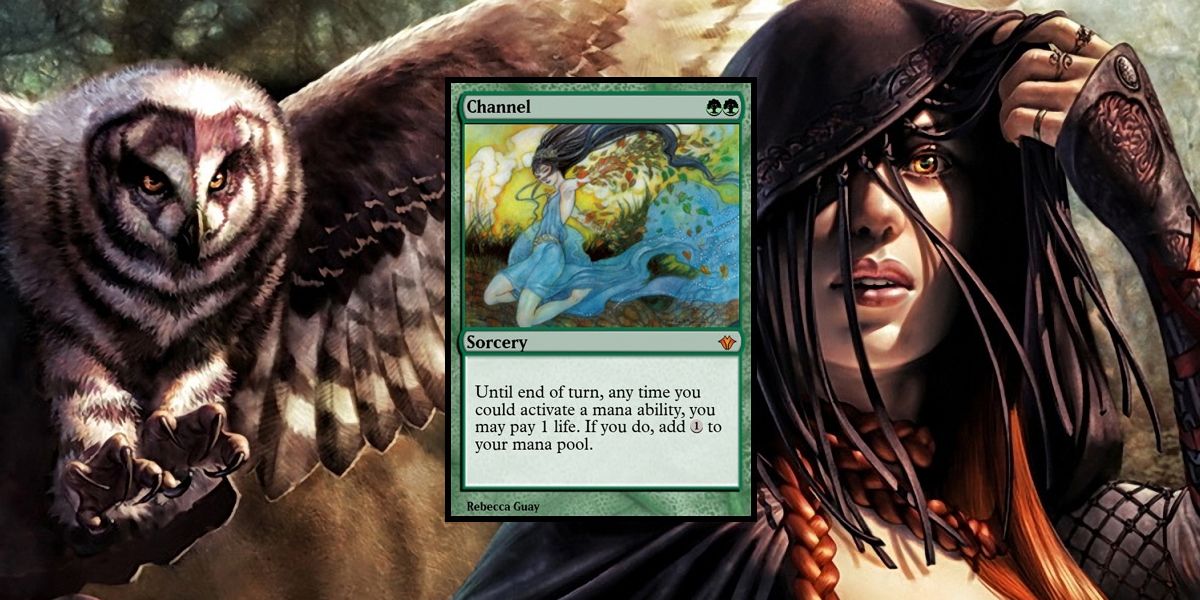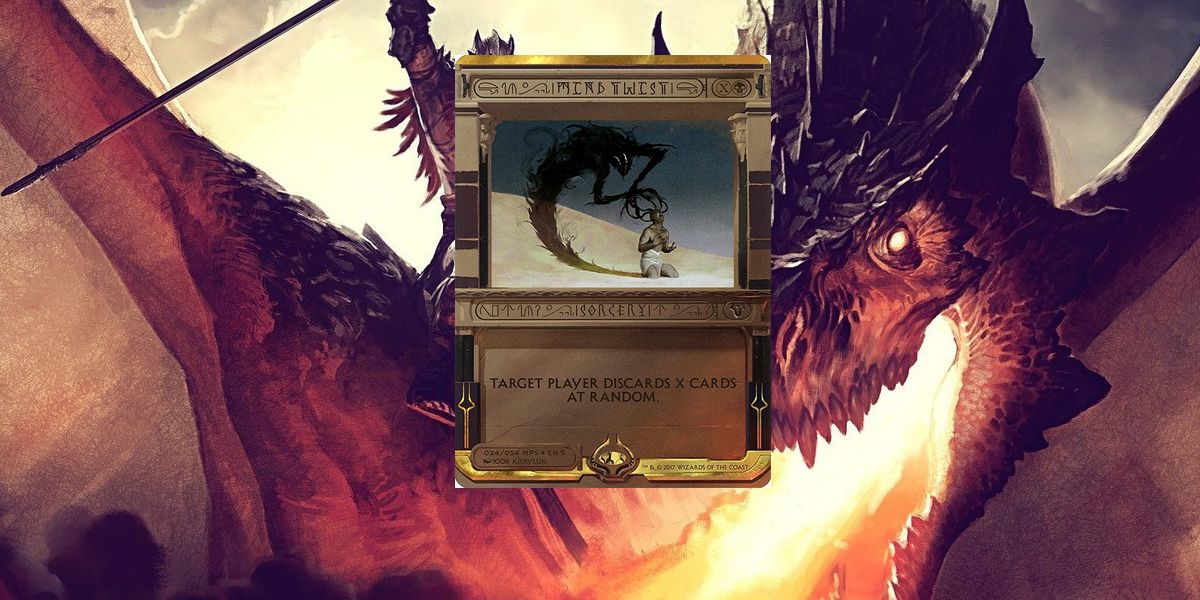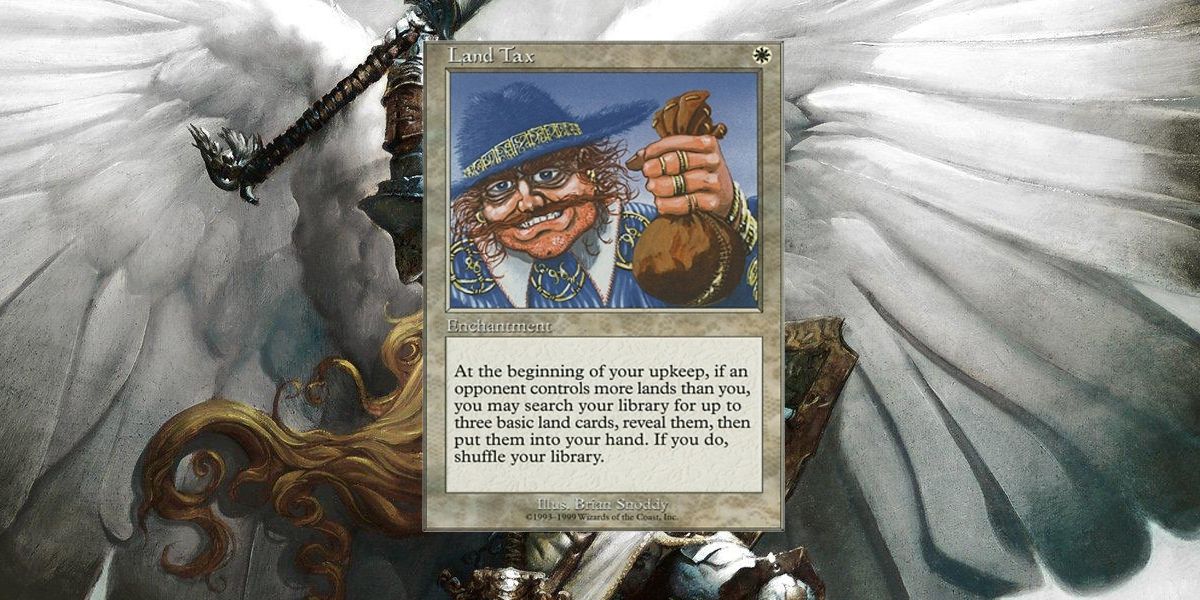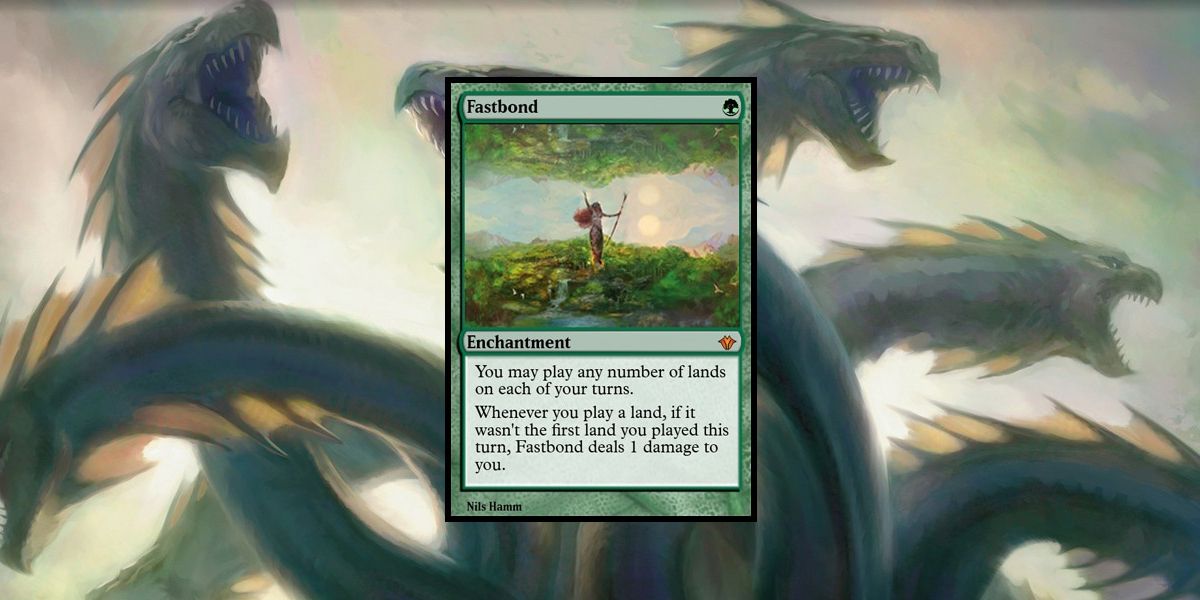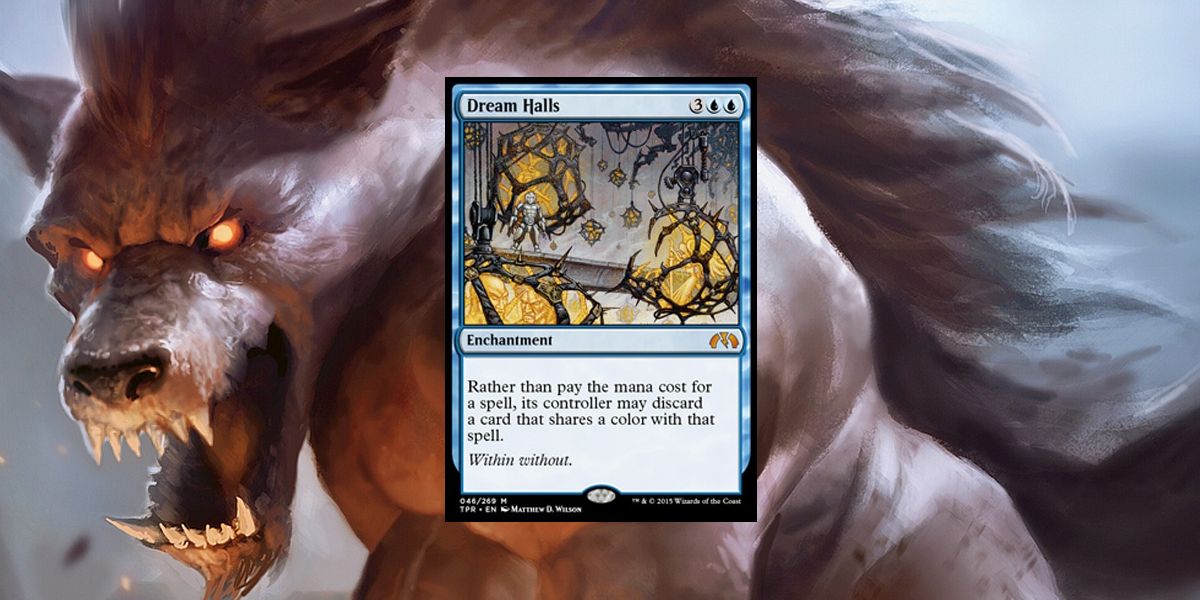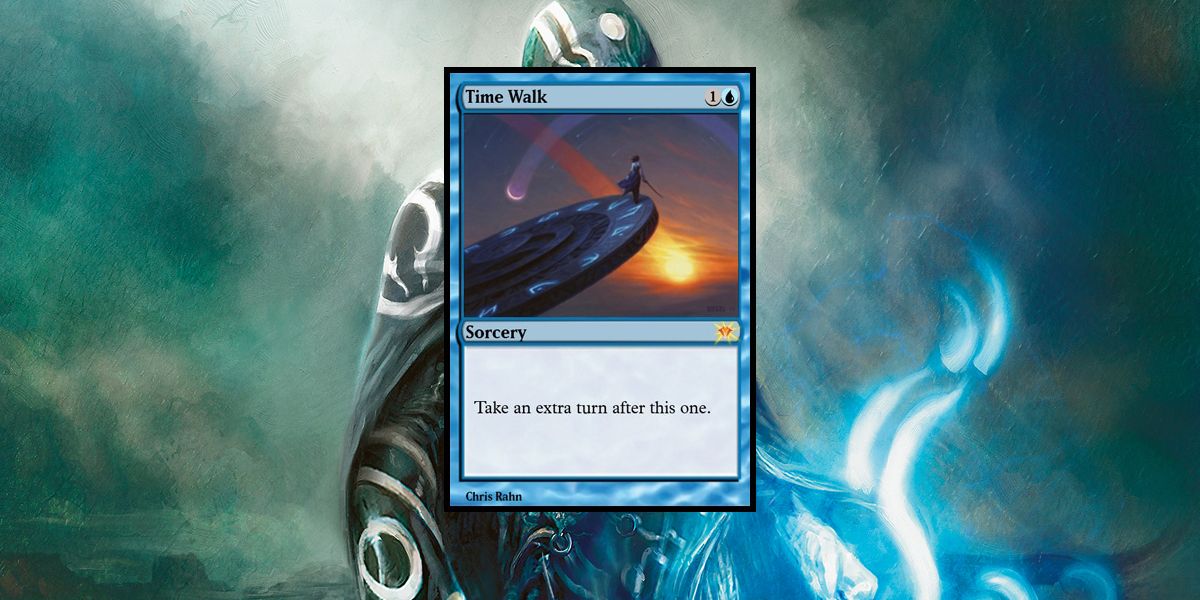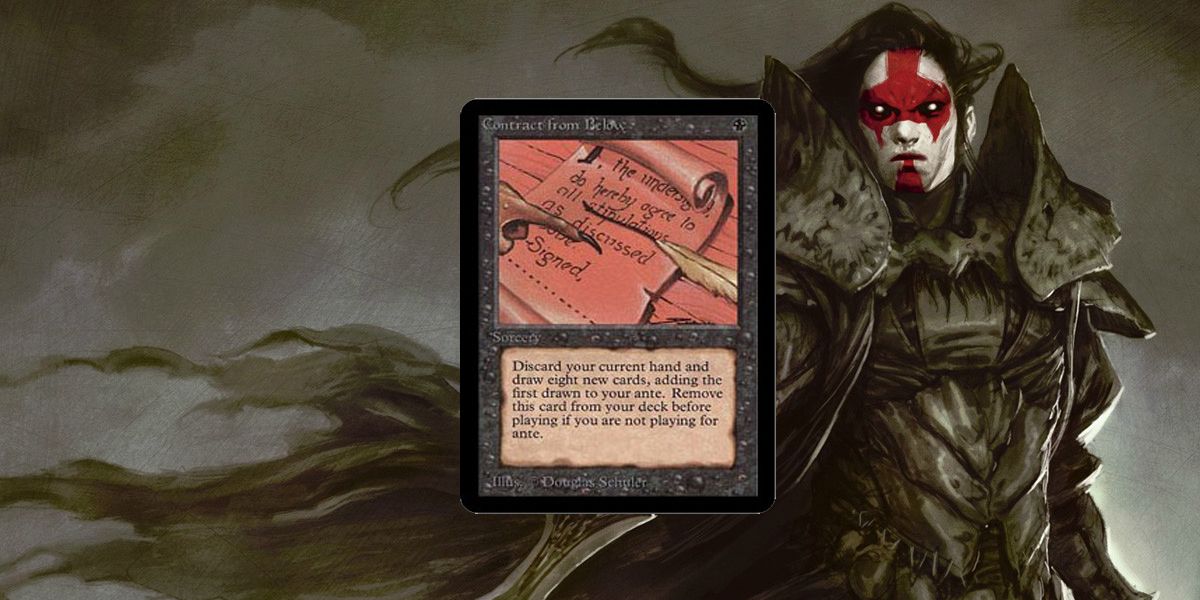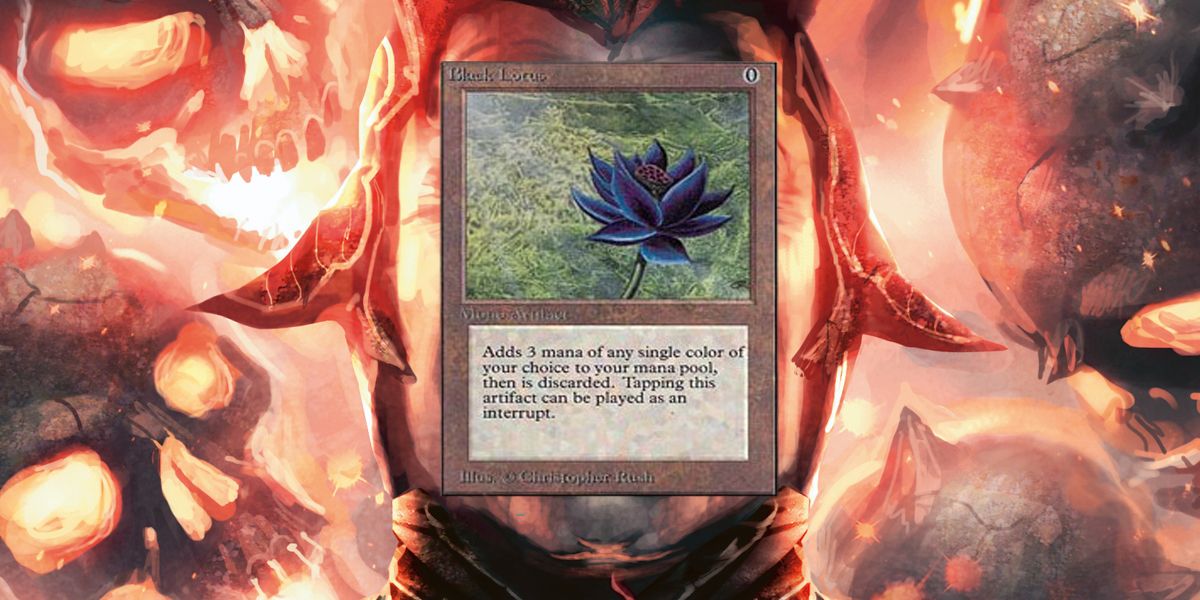There is a lot of money to be made by becoming a competitive Magic: The Gathering player. The prize funds for big tournaments can reach up to fifty thousand dollars for the winner.
It should come as no surprise that players will try and find every advantage they can, especially when the amount of prize money is that high.
One of the most effective ways to gain an advantage in Magic: The Gathering is to use cards in a way that the developers never expected them to be used. This can lead to those cards being banned before word gets out of how powerful they truly are.
We are here today to look at the Magic: The Gathering cards that had to be banned in order to prevent them from ruining the game.
From the orb that requires some excellent coin flipping skills to use to the flower that can still break the bank, here are the 15 Magic: The Gathering Cards That Had To Be Banned Before (Or After) They Broke The Game.
Chaos Orb
One of the reasons that Chaos Orb was banned was due to the fact that it was so hard to regulate during a match. The effect of Chaos Orb requires you to physically flip the card into the air like a coin.
If Chaos Orb lands on another card (or cards) then you destroy them. The rules on the card require Chaos Orb to be flipped from a height of at least one foot and it has to spin around completely at least once.
On a basic level, Chaos Orb is overpowered because it can potentially destroy several cards for the cost of two mana. A lot of players keep their land cards close together, which means that you could decimate your opponent's ability to create mana.
The actual reason that Chaos Orb is banned is simply that tournament judges don't want to have to deal with having to adjudicate whether someone is properly flipping a card in the correct manner. Chaos Orb also breaks down the game into one of dexterity, rather than planning or strategy.
Shahrazad
Shahrazad is an amazing card if your opponent is elderly, as you can use the classic "wait for your opponent to die of old age" strategy to defeat them.
The effect of Shahrazad is powerful, but that is not the real reason it was banned. When Shahrazad is played, both players have to pause their current game of Magic and start a brand new one using the remaining cards in their libraries.
Whoever loses this second game loses half of their remaining life. This card allows you to potentially deal a lot of damage in a single turn for little cost. It also helps if it is combined with a mill deck that forces the other player to discard a lot of cards from their library, as they will have less options when Shahrazad is played.
The reason Shahrazad was banned was due to the fact that it often doubled the length of matches. This meant that tournaments could be dragged on a lot longer than they needed to be.
Aetherworks Marvel
One of the most powerful abilities in Magic: The Gathering allows you to play a card without paying its cost. The mana structure exists to stop powerful cards from being played too soon and giving a player an overwhelming advantage before their opponent has a chance to respond.
Aetherworks Marvel is one of the most recent cards on this list to be banned. It was released as part of the Kaladesh set in 2016, where it became part of the popular "Marvel" archetype. This card quickly drew the ire of players, due to its ability to play high-level cards within a couple of turns.
Aetherworks Marvel gains an energy token whenever a permanent is put into the graveyard. You can spend six energy tokens to look at the top six cards of your deck and play one of them without paying its cost.
The Aetherworks Marvel becomes too powerful when it is chained with other cards. There are cards that allow you to search your deck and put a specific card on top of your library.
That effect, combined with Aethorworks Marvel would allow you to summon the nastiest creatures or play the most powerful spells in the game without cost.
Ancestral Recall
There are times when the most simple effect is also the most powerful. This is the case with all of the blue cards that you will see on this list, as their ability to circumvent the rules is what makes them so powerful.
Ancestral Recall is basically the Pot of Greed of Magic. It allows you to draw three cards for the cost of a single blue mana. This is an incredible effect for such a small cost.
The ability to draw three cards for almost no cost is the same as having a deck of a smaller size, which means that it makes it easier for you to reach the rare and powerful cards that you need.
Ancestral Recall was one of the first cards added to the banned list and it is still not allowed in most formats. You can only use a limited amount of them in the Vintage format.
A more balanced version of this card called Jace's Ingenuity was released later on. It allows you to draw three cards, but it has a cost of two blue/three of any other kind of mana.
Skullclamp
The worst thing that can happen to a card is if it gets overplayed. This was the fate of Skullclamp, as every player in 2004 used multiple copies of it in their deck. Wizards of the Coast took note and banned the card in various competitive formats.
Skullclamp is a card that was viable in practically every deck imaginable. This is due to the fact that it has the "Equip" effect, which allows it to remain in play even after the creature it is equipped to is sent to the graveyard.
If you manage to get multiple Skullclamps on the field and equip them to some weak monsters, then your opponent is giving you two free cards everytime he kills one of them. Skullclamp was especially effective in decks that spawned lots of 1/1 creatures, which is a common theme among players of green decks.
The sheer utility of Skullclamp meant that every serious competitive player was keeping four of them in their deck or sideboard. Its presence was so prevalent that it meant that players were having to base their strategies around countering a field full of Skullclamps.
The Mox Cards
The very first Magic: The Gathering ban list featured five cards that were very similar to each other; Mox Emerald, Mox Jet, Mox Pearl, Mox Ruby, and Mox Sapphire.
The original five Mox cards are part of a set referred to as "Power Nine", which are some of the oldest and most powerful cards in the game. Ancestral Recall is also a member of this group. The Mox cards account for five members of the Power Nine, though they are not considered to be the most unbalanced one (we'll get to that later).
The reason Mox cards are so powerful is that they basically act as free lands. You are usually restricted to being able to play only a single land per turn.
The Mox cards are artifacts without a cost, so you can summon as many of them to the field as you want. If these cards were legal, then players would base their entire deck around summoning as many Mox cards as possible and use them for a ton of free mana each turn.
Timetwister
Timetwister is another member of the Power Nine. Its power may not be apparent at first glance, due to the fact that it requires more strategy to pull off than the others.
The effect of Timetwister forces both players to shuffle their hand and graveyard back into their deck and draw seven cards. This actually has a few uses, the first of which involves screwing over the opponent.
A correctly timed Timetwister can mess up their plans, from removing powerful cards in their hand to messing up all the work performed by a mill deck.
The true strength of Timetwister is linked to the fact that it doesn't affect cards that are already on the field. This means that you can sacrifice a lot of cards to put strong spells/artifacts on the field and then get them all back. Timetwister is also effective in allowing you to draw a fresh hand after playing a lot of cards in a single turn.
Channel
Green decks in Magic: The Gathering have a lot of cards that grant additional life to the player. There are also a lot of big and nasty green monsters that have a high mana cost.
This was likely the thinking behind the creation of Channel, which allows you to turn life points into mana in the turn when it was cast. If you wait until later in the game, then you can use Channel to burn off a lot of your excess life and summon a lot of powerful monsters to the field.
That isn't the reason Channel is banned. The reason it is banned is due to its combo potential with cards like Fireball, which become more powerful for every point of mana you put into them.
You could combine Channel and Fireball together for an early kill, as you could potentially burn off all but one point of your life to make a Fireball so powerful that it kills the opponent in a single hit.
Mind Twist
Black decks tend to be focused around cards that summon from the graveyard or use life points as an additional cost. Their instant cards tend to be related to weakening or killing the opponent's monsters.
Mind Twist is an unusual card in that it is a black spell that affects the opponent's hand, as those kinds of effects are normally used by blue cards. Mind Twist forces the opponent to discard a number of cards equal to the mana you paid (minus one) to play the spell.
Spells that attack the hand are powerful because they prevent the opponent from countering. It will remove most of their options and they could potentially be left with an empty hand.
The fact that Mind Twist is a black card means that it can combo with Dark Ritual so that you can empty your opponent's hand on the first or second turn, which will cripple them.
Land Tax
Land Tax is a card that is best used near the start of a match. It allows you to search and draw up to three lands at the start of your turn, so long as your opponent has more lands than you do. Lands are everything in Magic: The Gathering, as you need them to produce mana.
The ability to draw three lands for the cost of a single mana is a powerful one, which is why it was banned early on. You can also draw any kind of land, which makes it effective for decks that use multiple colors.
The other aspect of Land Tax that made it so broken is that it is an enchantment, meaning that you can use it multiple times over the course of the game.
You could use Land Tax to stock up on various land cards, which may discourage your opponent from playing one themselves, as the more lands they have, the longer you can use Land Tax.
Fastbond
Magic: The Gathering is a game that is defined by resources. You need lands to produce mana and you need mana to be able to play cards.
This is one of the reasons why some gamers don't like Magic, as an initial draw (or mulligan) that doesn't contain lands can screw you over for the rest of the match and make it impossible for you to catch up with your opponent. It is for this reason that you are usually only allowed to play a single land from your hand every turn.
Fastbond allows you to play any number of lands from your hand at the cost of a single mana and a life point for each land after the first.
This card is ripe for abuse, as it can allow you to gain an overwhelming advantage over your opponent, as your mana production will be so big that you will be able to throw out high-level threats during the early turns of the match.
Dream Halls
The idea that a card like Dream Halls was ever released shows that the creators of Magic: The Gathering don't care about balance. The amount of havoc that can be wrecked with this card is limitless.
Dream Halls is an enchantment that costs five mana. For this cost, you are able to play any card in the game, so long as you discard a card of the same color. This means that you can play high-level cards at the cost of a discarding a low-level card.
There are some incredibly powerful Magic: The Gathering cards whose only drawback is that they require a lot of mana to summon. Dream Halls allows you to bypass this effect and bring some late-game creatures to the field for practically no cost.
The most broken combo involving Dream Halls is to use it to play Enter the Infinite, which normally has a cost of twelve mana. This will allow you to draw your entire deck, save for a single card. You then use Dream Halls to play Laboratory Maniac on your next turn to win the match.
Time Walk
Dream Halls is over-powered, but at least it requires a cost of five mana. Time Walk allows you to win the game for a lot cheaper. This card may be the most feared member of the Power Nine.
Time Walk gives you an extra turn for the measly cost of two mana. This is an insanely broken ability, as an extra turn gives you a whole new opportunity to draw cards, use spells, and attack with monsters.
If you manage to find a card that will allow you to search for spells or pull them from the graveyard, then you can give yourself multiple turns, while your opponent just sits there.
The original text for Time Walk during its development stated that the opponent loses their next turn. This was changed, as someone pointed out that this could be interpreted as the opponent losing the match the next turn, which led to Time Walk now granting the player an additional turn.
The Ante Cards
This is more of a meta-example, but the ante cards deserve a place on the list, due to the fact that they threatened Magic: The Gathering on a much bigger scale than by simply being overpowered.
In the early days of Magic, there were some cards that had the "ante" rule. This meant that players actually had to bet their cards in the match, by using them as an ante. The winner of the game would win the cards that their opponent put up as part of the ante.
The idea of betting cards was unpopular with Magic players, especially as they can be worth a lot of money. The real issue with the ante cards was that they had the potential of turning Magic into a game involving gambling.
If the ante cards had remained, then they may have led to Magic falling under the same classification as Poker or Blackjack. This would have severely restricted the amount of places that could host Magic tournaments and would have raised the minimum age for players.
As such, the ante cards were banned and have never been allowed in tournaments since.
Black Lotus
Black Lotus might be the most well-known Magic: The Gathering card of all time. This is because they still command outrageous prices for high-quality copies of the card. A Black Lotus can still fetch around twenty-five grand online.
Black Lotus was one of the first cards on the Magic: The Gathering banned list. It gives you three mana of any color for no cost. This effect is very simple, yet this is the reason why it works so well. T
hree free mana at a moment's notice can do so much, such as allowing you to surprise your opponent by using a higher level card than what they were expecting. Black Lotus allows you to easily and cheaply break the resource management aspect of Magic: The Gathering, which is the thing that is supposed to make the game balanced.
You can actually play a single Black Lotus in your deck if you are playing in a tournament that uses the Vintage format. Just don't expect to see anyone throwing an Alpha or Beta set version of the card on the field, as they are worth more money than most cars or apartments.
---
Can you think of any other Magic: The Gathering cards that were banned? Let us know in the comments!

